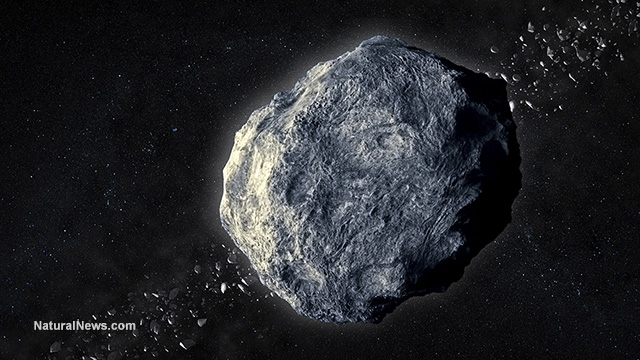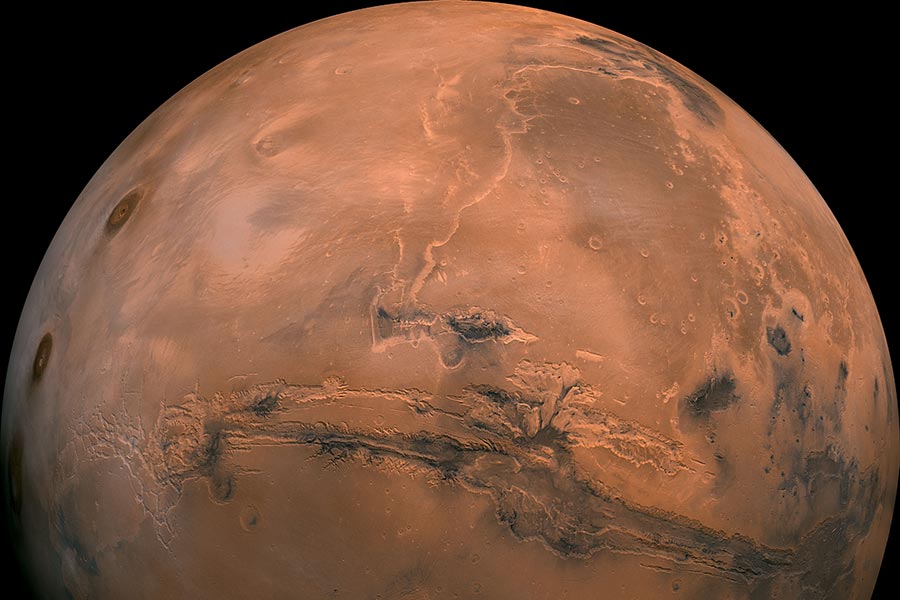NASA: Asteroid bigger than a basketball court will soon hurtle past Earth
09/01/2020 / By Virgilio Marin

An asteroid bigger than a basketball court will zoom past Earth today, September 1, according to the National Aeronautics and Space Administration (NASA).
Asteroid 2011 ES4 does not pose any harm, added NASA. Although classified as a near-Earth object (NEO), the asteroid will only make a flyby around Earth and will come within 45,000 miles to the ground at most.
“[Asteroid] 2011 ES4’s close approach is “close” on an astronomical scale but poses no danger of actually hitting Earth,” NASA said in a tweet. “#PlanetaryDefense experts expect it to safely pass by at least 45,000 miles (792,000 football fields) away on Tuesday Sept. 1.”
Asteroid 2011 ES4 was discovered on March 2, 2011. It was classified as an Apollo asteroid – that is, it has a wide orbit around Earth and the Sun compared to other objects in the asteroid belt.
Meanwhile, a second, smaller asteroid will also fly past Earth on Tuesday. NASA said that asteroid 2020 QG5 will fly closest to the planet at about 1.8 million miles.
NASA prepares for potentially hazardous asteroids
Due to the considerable risk posed by an asteroid impact, NASA is keen on monitoring and preparing for a massive asteroid on a collision course to the planet.
In 2018, the agency unveiled a 20-page plan that detailed the precautionary steps the U.S. should take to be better prepared for NEOs – comets and asteroids that enter Earth’s neighborhood. The plan outlined five goals, including enhancing NEO detection, improving modeling prediction and enhancing international cooperation.
NASA’s Center for Near-Earth Object Studies (CNEOS) monitors space for any NEOs. CNEOS identified almost 23,500 NEOs as of August 28, 2020. The list gets updated almost every day as space surveys and observations get refined through time.
One NEO recently broke the record for the closest a space object got to Earth without resulting in an impact. Asteroid QG is the size of an SUV and flew within 2,000 miles of Earth. It was detected only six hours after it flew past the planet.
According to NASA, the asteroid is comparatively small such that, if it did enter the atmosphere, it would have broken apart into small fragments.
Meanwhile, asteroids that may be threatening to life on Earth are classified as Potentially Hazardous Asteroids or PHA. These are asteroids that come within 4.65 million miles or less of Earth and has a brightness magnitude that implies a diameter of more than 500 feet. A recent space survey by NASA estimated that there are about 4,700 PHAs, plus or minus 1,500 space rocks. Only 30 percent of them have been identified at the time of the survey.
However, NASA said that no major space objects poses an imminent threat in the next 100 years. The highest risk of impact for a known asteroid is only one in 714 – that’s less than 0.2 percent. If it does land on Earth, asteroid 2009 FD is projected to hit in 2185 at the earliest possible time. (Related: NASA chief: Asteroid strikes are not like the movies, world powers should prepare for impact.)
One asteroid that NASA is studying up close is called Bennu. It has a one in 2700 likelihood of hitting Earth between 2175 and 2195. NASA’s OSIRIS-Rex spacecraft is about to complete a two-year investigation of the asteroid before plucking rock samples and delivering them back to Earth. The first attempt at sample collection is set for October 20 this year. If all goes according to plan, the OSIRIS-Rex mission will mark the first U.S. mission to bring rock samples from an asteroid back to Earth.
The spacecraft, which reached the asteroid in December 2018, is also studying how sunlight may affect Bennu’s orbit. In turn, this could help astronomers determine how the asteroid could become dangerous to Earth.
Space.news has more on NASA’s efforts to monitor and study asteroids.
Sources include:
Submit a correction >>
Tagged Under:
Asteroid, asteroid impact, disaster, NASA, Near Earth Object, outer space, potentially hazardous asteroids, space exploration
This article may contain statements that reflect the opinion of the author
RECENT NEWS & ARTICLES
Cosmic.News is a fact-based public education website published by Cosmic News Features, LLC.
All content copyright © 2018 by Cosmic News Features, LLC.
Contact Us with Tips or Corrections
All trademarks, registered trademarks and servicemarks mentioned on this site are the property of their respective owners.



















